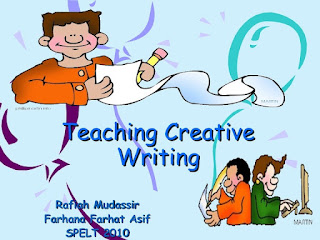Teaching Creative Writing - Unleash Your Imagination
The Power of Creative Writing
Creative writing is an art form that allows individuals to express their thoughts, ideas, and emotions in a unique and imaginative way. It nurtures the ability to communicate effectively, think critically, and explore endless possibilities. As a teaching tool, creative writing not only enhances language skills but also encourages self-expression and stimulates the mind.
The Importance of Teaching Creative Writing
Teaching creative writing has become increasingly important in today's educational landscape. As traditional teaching methods focus on structured essay writing, teaching creative writing allows students to break free from rigid guidelines and explore their own unique style of writing.
When students are provided with the opportunity to engage in creative writing, they become more confident, articulate, and effective communicators. It fosters their ability to think outside the box and develop their own distinct voice. Moreover, teaching creative writing also promotes critical thinking, problem-solving, and empathy.
Strategies for Teaching Creative Writing
Here are some effective strategies for teaching creative writing:
- Encourage personal expression: Create a safe and supportive environment where students feel free to express their thoughts and ideas without judgment. Encourage them to explore different genres, experiment with different writing styles, and embrace their unique voices.
- Promote self-reflection: Encourage students to reflect on their personal experiences, beliefs, and emotions. This self-reflection helps them develop a deeper understanding of themselves and enhances the authenticity of their writing.
- Provide inspiration: Introduce students to various forms of literature, such as poetry, short stories, and novels. Expose them to different writing techniques and styles to broaden their horizons and inspire their creativity.
- Facilitate peer feedback: Encourage students to share their work with their peers and provide constructive feedback. This not only instills a sense of community and collaboration but also helps students refine their writing skills and learn from one another.
- Use prompts and exercises: Provide writing prompts and exercises to stimulate the imagination and overcome writer's block. Prompts can be as simple as a single word or as complex as a thought-provoking question. These activities encourage students to think creatively and develop their writing skills.
The Role of the Teacher
In teaching creative writing, the role of the teacher is vital. A teacher should act as a guide, mentor, and facilitator, nurturing students' creativity and providing constructive feedback to help them grow as writers. The teacher should foster a love for writing and inspire students to explore and experiment with different forms and genres.
Furthermore, implementing a well-rounded curriculum that integrates creative writing with other disciplines, such as visual arts or music, can enhance the overall learning experience and encourage cross-disciplinary thinking.
By teaching creative writing, educators are not only equipping students with valuable language skills but also enabling them to unleash their imagination and discover their unique writing potential. It's an investment in creativity, self-expression, and personal growth, ultimately preparing students to thrive in an ever-changing world.



No comments:
Post a Comment